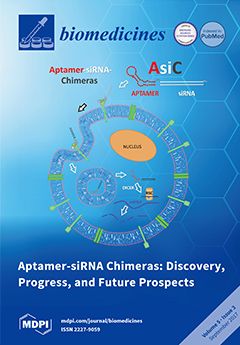Open AccessArticle
Supplementation with Achyrocline satureioides Inflorescence Extracts to Pregnant and Breastfeeding Rats Induces Tissue-Specific Changes in Enzymatic Activity and Lower Neonatal Survival
by
Karla Suzana Moresco, Alexandre Kleber Silveira, Carlos Eduardo Schnorr, Fares Zeidán-Chuliá, Rafael Calixto Bortolin, Leonardo Da Silva Bittencourt, Moara Mingori, Luana Heimfarth, Thallita Kelly Rabelo, Maurilio Da Silva Morrone, Juliana Poglia Carini, Daniel Pens Gelain, Valquiria Linck Bassani and José Cláudio Fonseca Moreira
Cited by 11 | Viewed by 5075
Abstract
Achyrocline satureioides (AS, family Asteraceae) is a plant widely used in traditional medicine for stomach, digestive, and gastrointestinal disorders during pregnancy. Studies regarding the indiscriminate use of plant infusions during pregnancy are limited. Recent reports have shown that chronic flavonoid supplementation induces toxicity
[...] Read more.
Achyrocline satureioides (AS, family Asteraceae) is a plant widely used in traditional medicine for stomach, digestive, and gastrointestinal disorders during pregnancy. Studies regarding the indiscriminate use of plant infusions during pregnancy are limited. Recent reports have shown that chronic flavonoid supplementation induces toxicity in vivo and raises the mortality rates of healthy subjects. Therefore, we investigated whether supplementation of pregnant and lactating Wistar rats with two AS inflorescence extracts, consisting of an aqueous (AQ) extract similar to a tea (47 mg·kg
−1·day) and a hydroethanolic (HA) extract (35 mg·kg
−1·day
−1) with a higher flavonoid content, could induce redox-related side effects. Total reactive antioxidant potential (TRAP), thiobarbituric reactive species (TBARS), and total reduced thiol (SH) content were evaluated. Superoxide dismutase (SOD) and catalase (CAT) activities were additionally quantified. Our data suggest that both AQ and HA of AS inflorescence extracts may induce symptoms of toxicity in concentrations of (47 mg·kg
−1·day) and (35 mg·kg
−1·day
−1), respectively, in mothers regarding the delivery index and further decrease of neonatal survival. Of note, significant tissue-specific changes in maternal (liver, kidney, heart, and hippocampus) and pups (liver and kidney) biochemical oxidative parameters were observed. Our findings provide evidence that may support the need to control supplementation with the AQ of AS inflorescence extracts during gestation due to potential toxicity in vivo, which might be related, at least in part, to changes in tissue-specific redox homeostasis and enzymatic activity.
Full article
►▼
Show Figures






